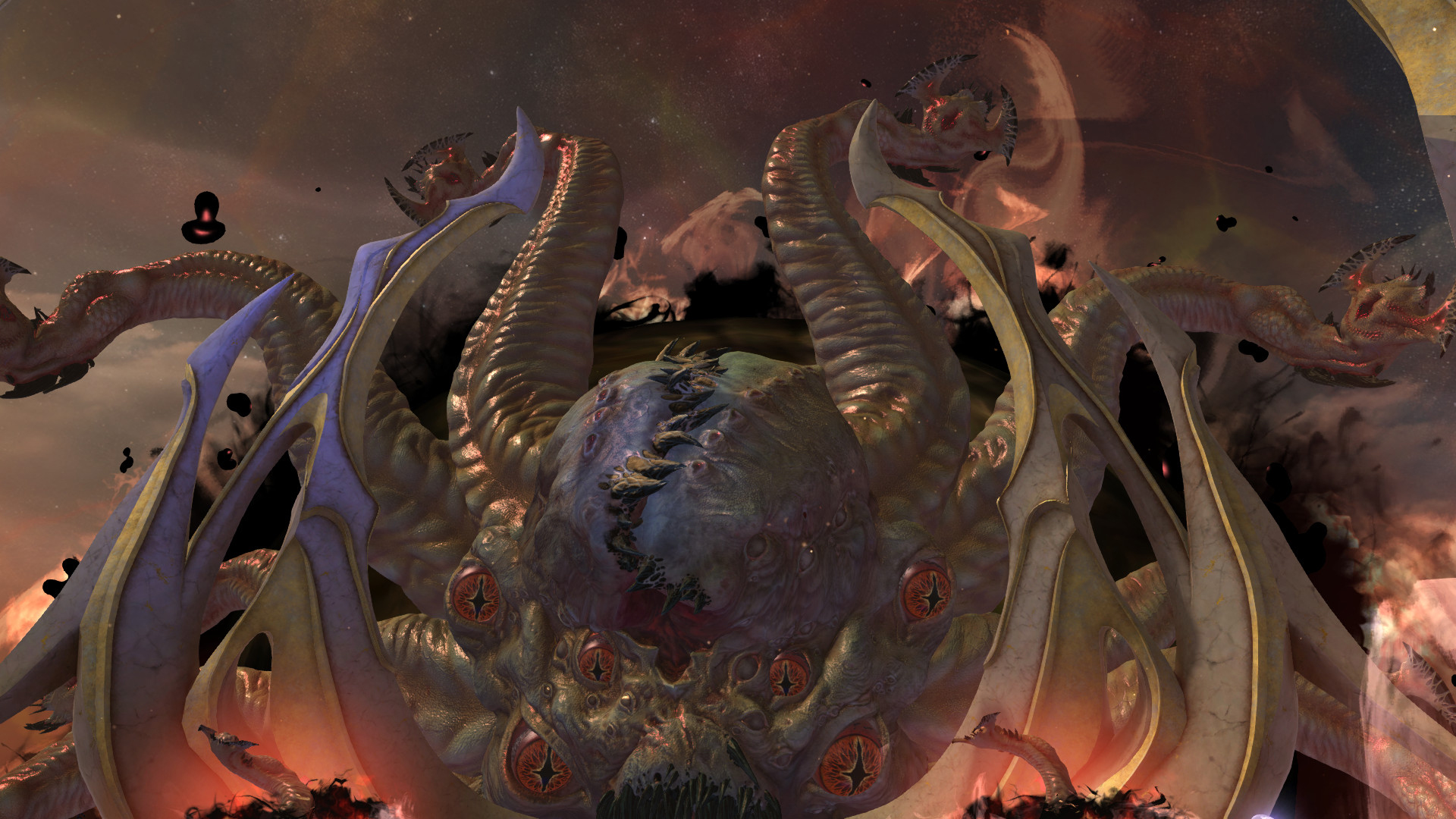Nintendo Switch 2 vs Switch OLED – should you upgrade?
Excited by the launch of Nintendo Switch 2 but not sure if you should upgrade or buy the older Switch OLED? Here are the main differences between the consoles.
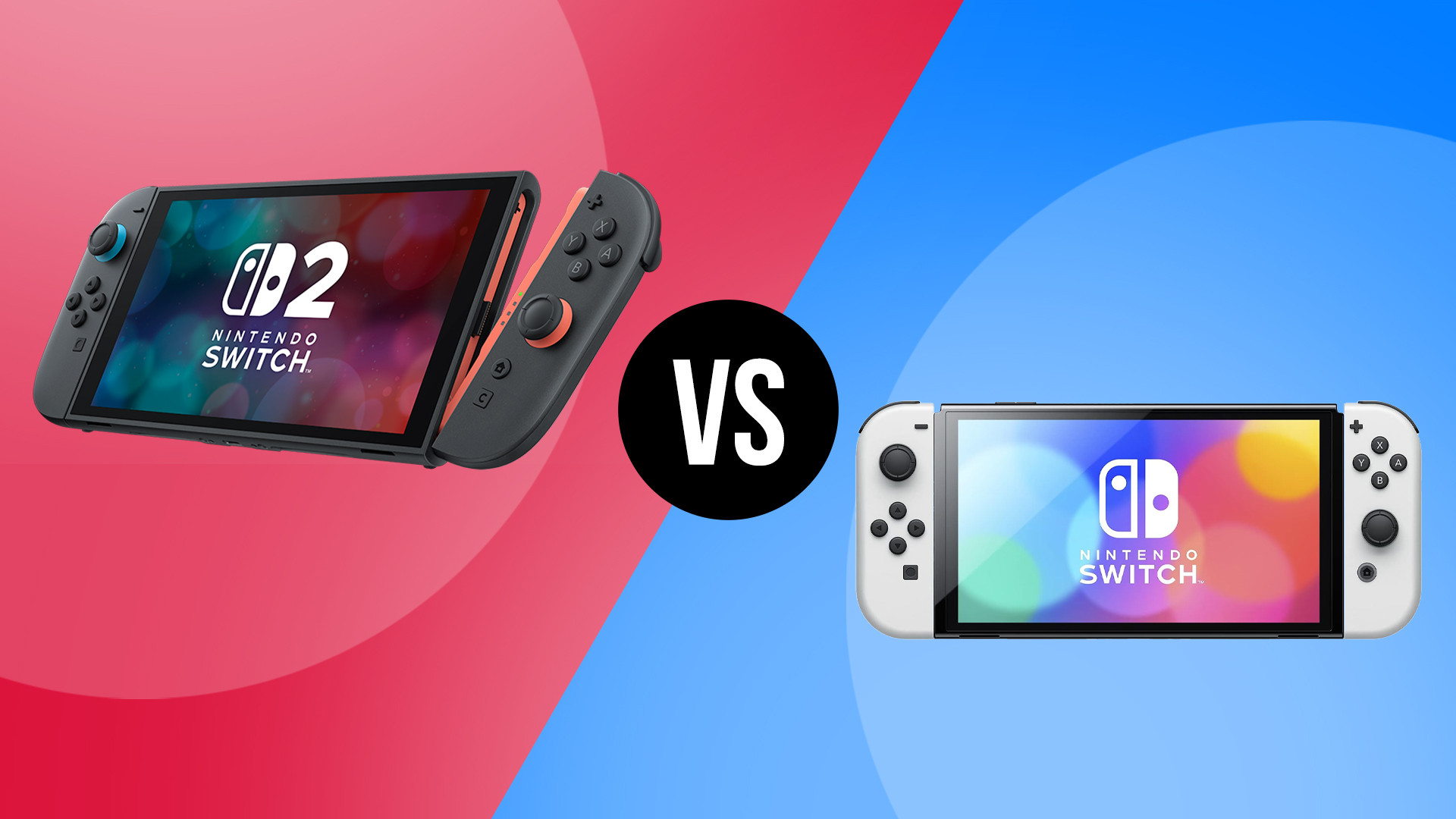
Following months of constant teasing and myriad hardware specs leaking out, the Nintendo Switch 2 is very much real and here after being fully unveiled in all its glory by Nintendo earlier this week. You can read a breakdown of the console itself in our Nintendo Switch 2: everything you you need to know explainer.
Since then, journalists across the world have been getting hands on with the hybrid console device to discover just how much of an improvement it is over the original model, which first launched back in 2017 (if you can believe it).
Despite being Nintendo’s first true ‘sequel’ console from a pure design and naming standpoint, it turns out there’s still plenty of improvements players who pick up a Nintendo Switch 2 will notice when it launches on June 5, 2025. (Switch 2 pre-orders open 8 April in the UK.)
Picking up a brand-new console on day one of its release is a big decision, obviously, hence why it’s worth breaking down all the different hardware differences between what was available before compared to the upcoming Nintendo Switch 2.
Fortunately, form-factor and functionality appears to be mostly the same, albeit with a few extra bells and whistles. For this article, we’ll be comparing and contrasting all the hardware differences between the Nintendo Switch 2 and the most recent update on its predecessor, that one being the Nintendo Switch – OLED Model first launched in 2021. Here’s how the Nintendo Switch 2 stacks up by comparison.
Switch 2 vs Switch OLED: display
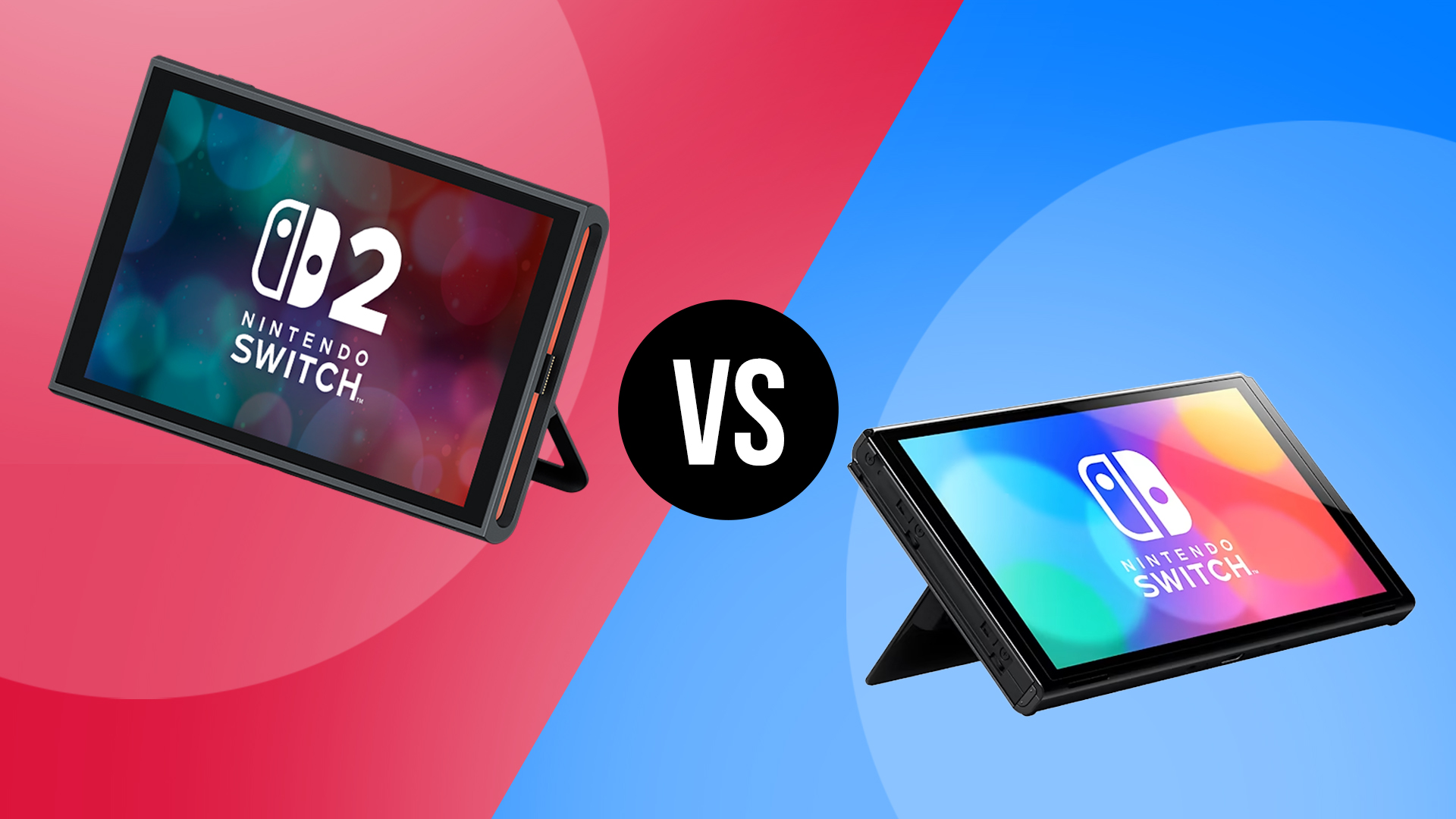
When it comes to the display there are a few differences in the Nintendo Switch 2 vs Nintendo Switch OLED to be aware of. The first one is right there in the name. Unlike the Nintendo Switch OLED Model, Nintendo’s sequel does not in fact include an OLED screen at all and instead reverts back to an updated version of the original Nintendo Switch’s screen that Nintendo is now calling ‘vivid LCD’.
Though probably not the most ideal, this LCD panel type on Switch 2 does include built-in HDR support for far better light and dark colour tones on the display. Then there’s the size of the screen itself. While the 2017 Nintendo Switch model boasted a modest screen size of just 6.2 inches, Nintendo eventually upped this ante by gracing the Nintendo Switch OLED with a 7-inch screen.
For context, read our Nintendo Switch vs Switch OLED explainer to see how the original matches up to the newer OLED model. Likewise, our Nintendo Switch vs Switch Lite explainer compares the original console to the slimmer, digital-only console.
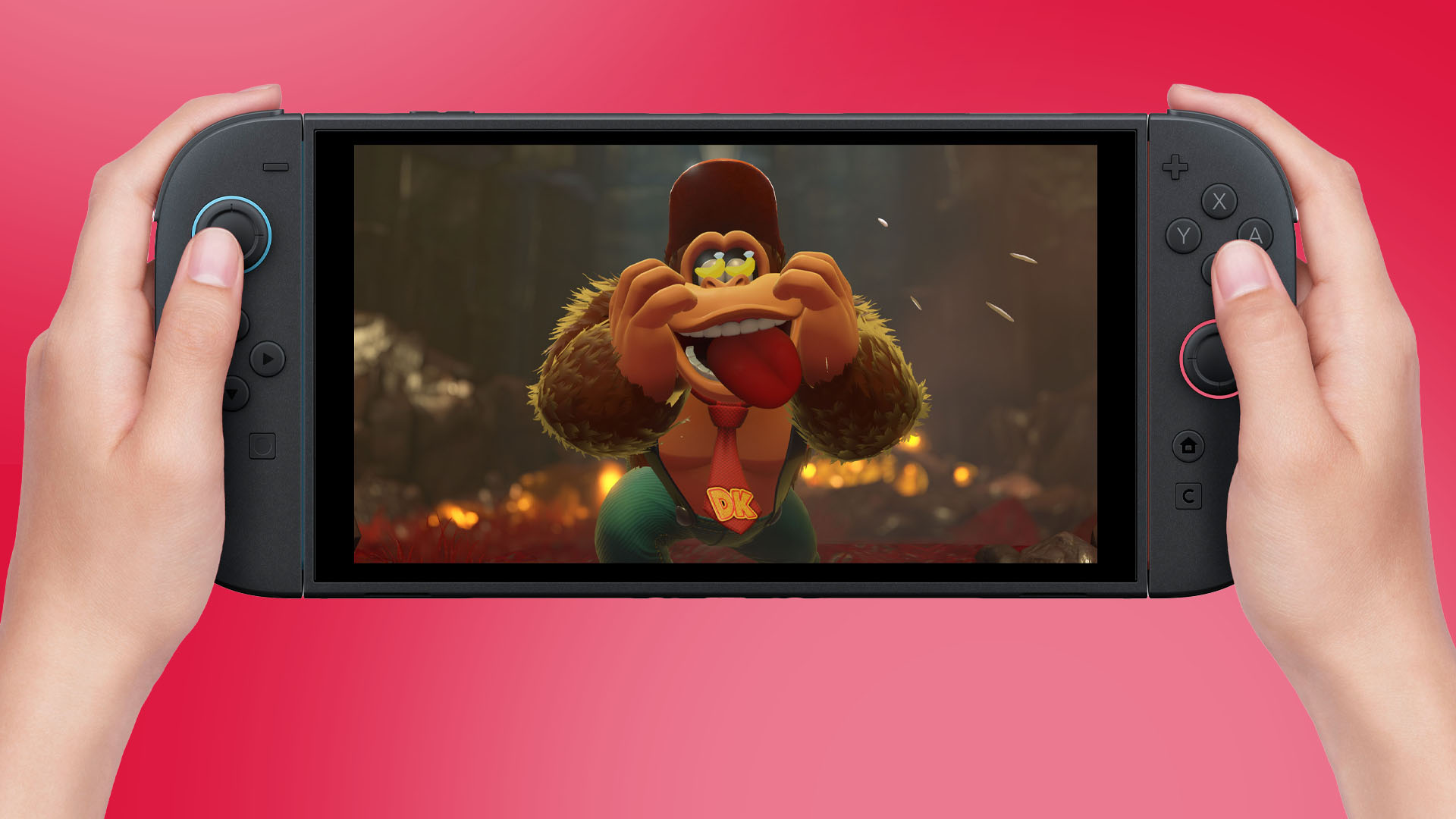
Thankfully, though a bezel around its border returns, the Nintendo Switch 2 goes bigger again with a screen that is 7.9 inches. This will be a big jump for those who plan on upgrading from a standard Nintendo Switch, yet even those who have currently made the Switch OLED model their preferred option should notice a nice difference too. Games will appear larger than ever when played on the go.
Finally, the last big improvement with regards to the Nintendo Switch 2 display relates to the increased resolution. Whereas the original Nintendo Switch and Nintendo Switch OLED could only output at 720p when played in handheld, the Nintendo Switch 2 goes big and offers Full HD output at 1080p.
Things get even better on Switch 2 when talking about the new console's docked mode, which can achieve 4K resolution alongside a whopping 120fps (in select first-party games that support it). Resolution is undeniably the biggest area that has seen improvement with regards to the Nintendo Switch 2 display. In docked mode, the device is on par with the best games consoles like PlayStation 5 and Xbox Series X.
Switch 2 vs Switch OLED: controllers

The Joy-Con controllers make their return with the Nintendo Switch 2 – only now with an added method of control (more on that later). For the most part, however, they work the same as the original Nintendo Switch and Switch OLED, in that they can be clicked on and clicked off depending on whether you want to play in handheld mode (with the Joy-Con attached to the screen) or in docked mode (with the Joy-Con attached to a dedicated grip).
The difference with Switch 2 comes in how you attach them. Whereas the previous Nintendo Switch and Switch OLED consoles had you slide them up and off, the Nintendo Switch 2 uses magnetisation to have them simply pop off either side after pressing down a latch at the back. It looks to make for a more seamless experience.
Then, as well as the ability to use the Joy-Con in a grip for a traditional gamepad experience, the ability to play with one Joy-Con in each hand – with added gyroscopic aiming controls in games like Metroid Prime 4: Beyond – returns.
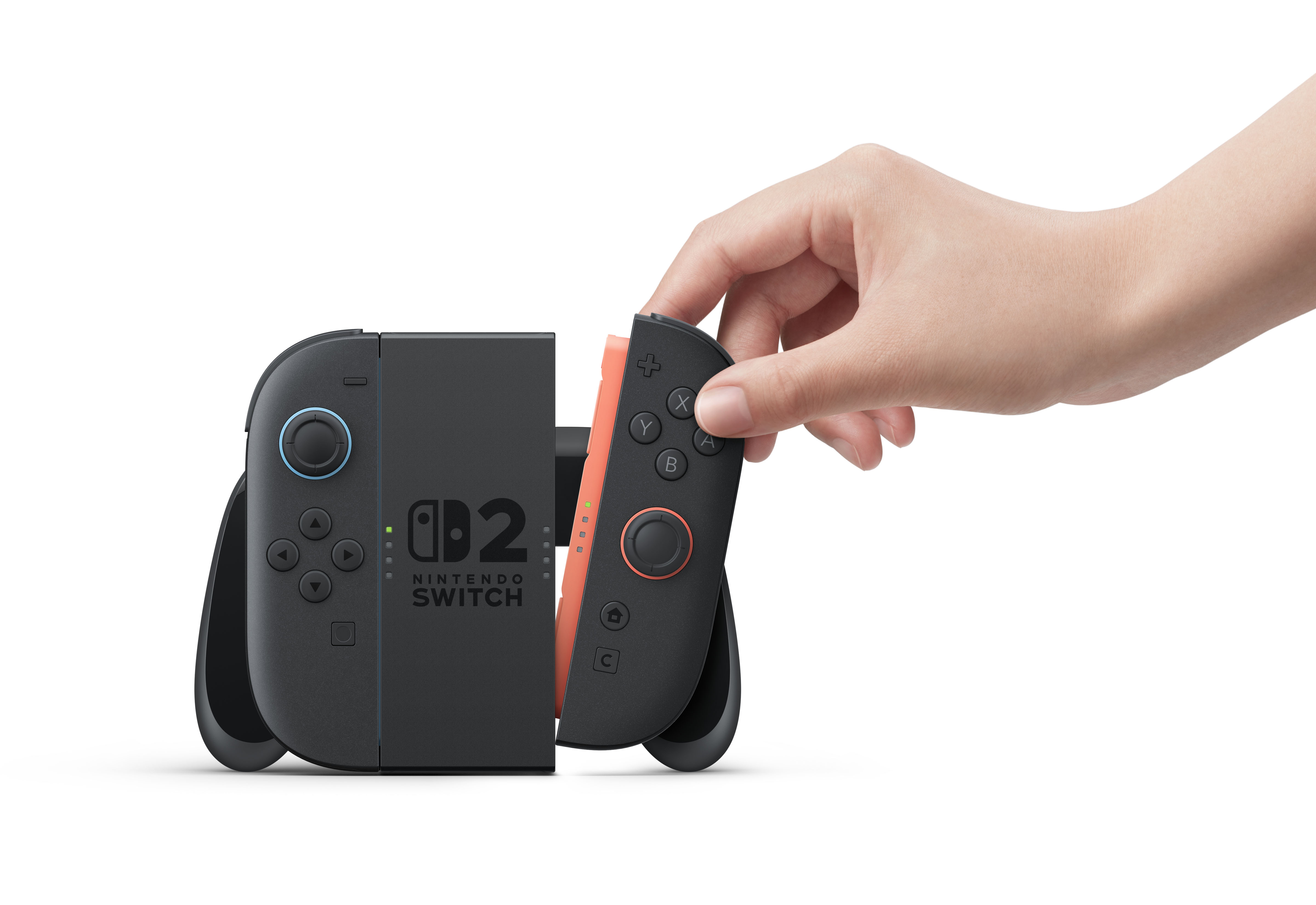
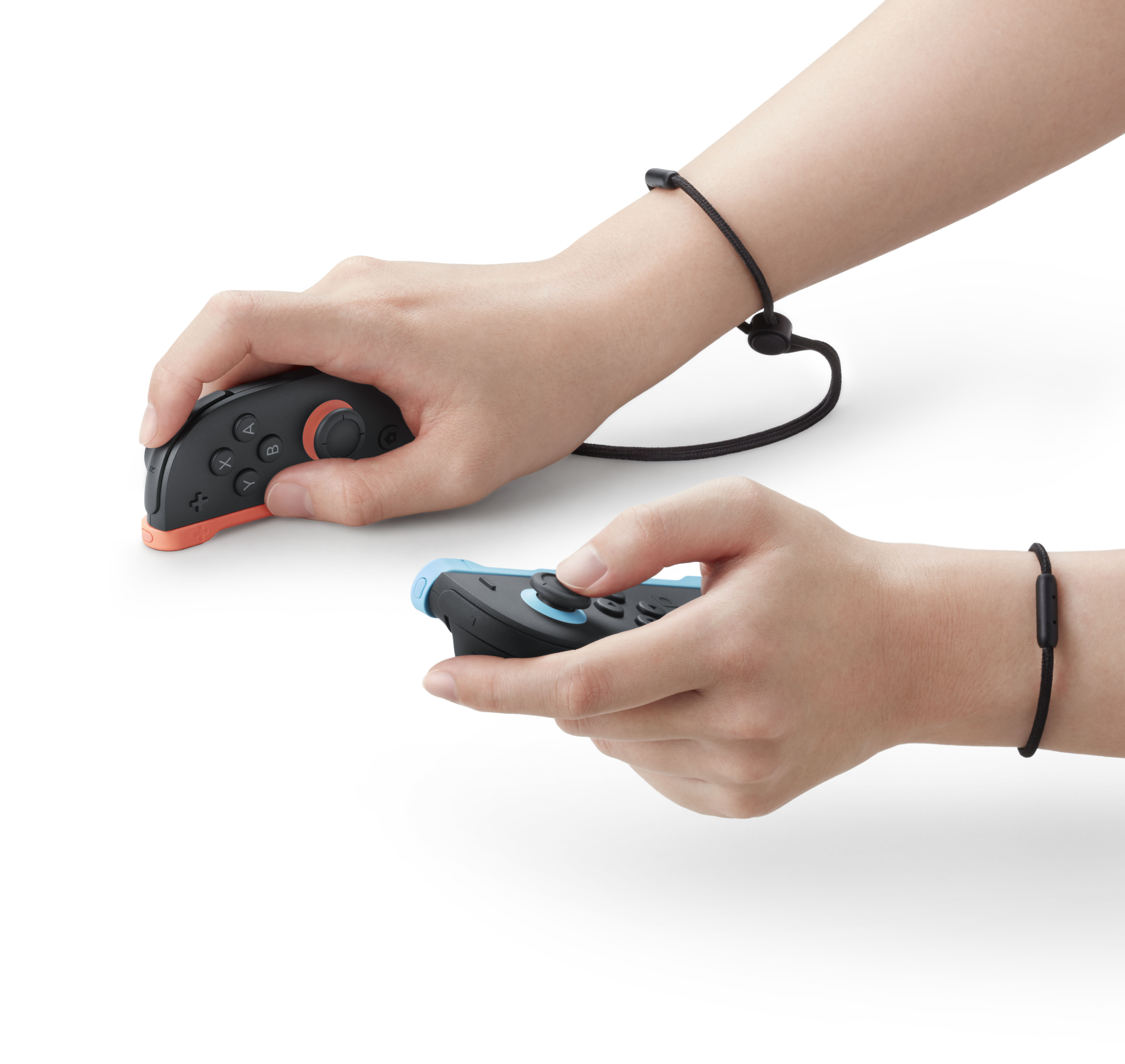
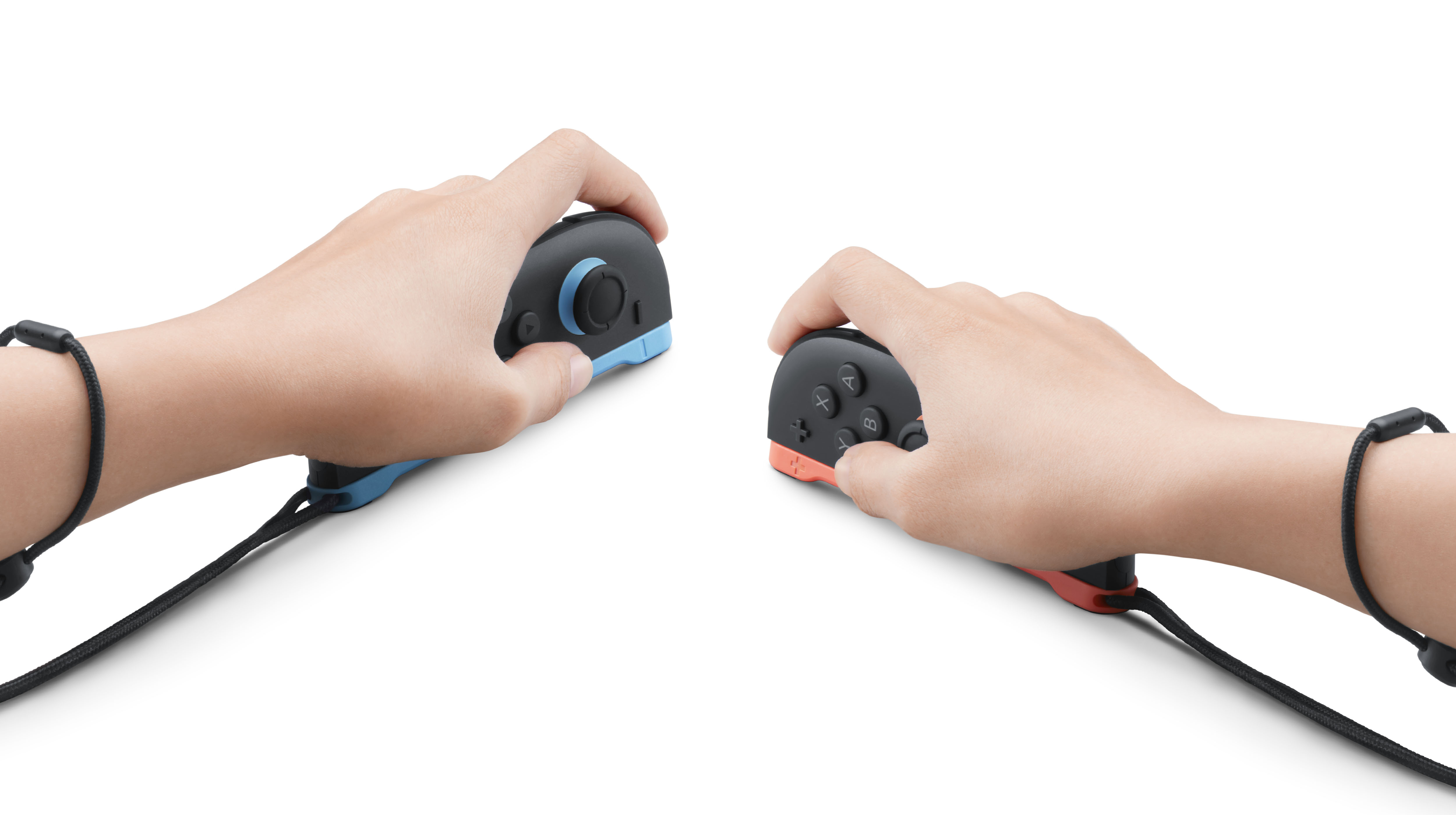
However, exclusive to the Nintendo Switch 2 is an entirely new control method, which sees your left and right Joy-Con function more like a keyboard-and-mouse PC setup when placed faced down on a desk or table in front of you. This introduces a totally new point-and-click experience that will make playing shooters and tactics games on Nintendo Switch 2 more precise.
This mouse control is merely an optional play-style in most games, though, and isn’t forced upon you, but Nintendo is launching some games specifically designed around this new Switch 2 feature, such as wheelchair basketball game Drag x Drive.
Switch 2 vs Switch OLED: design
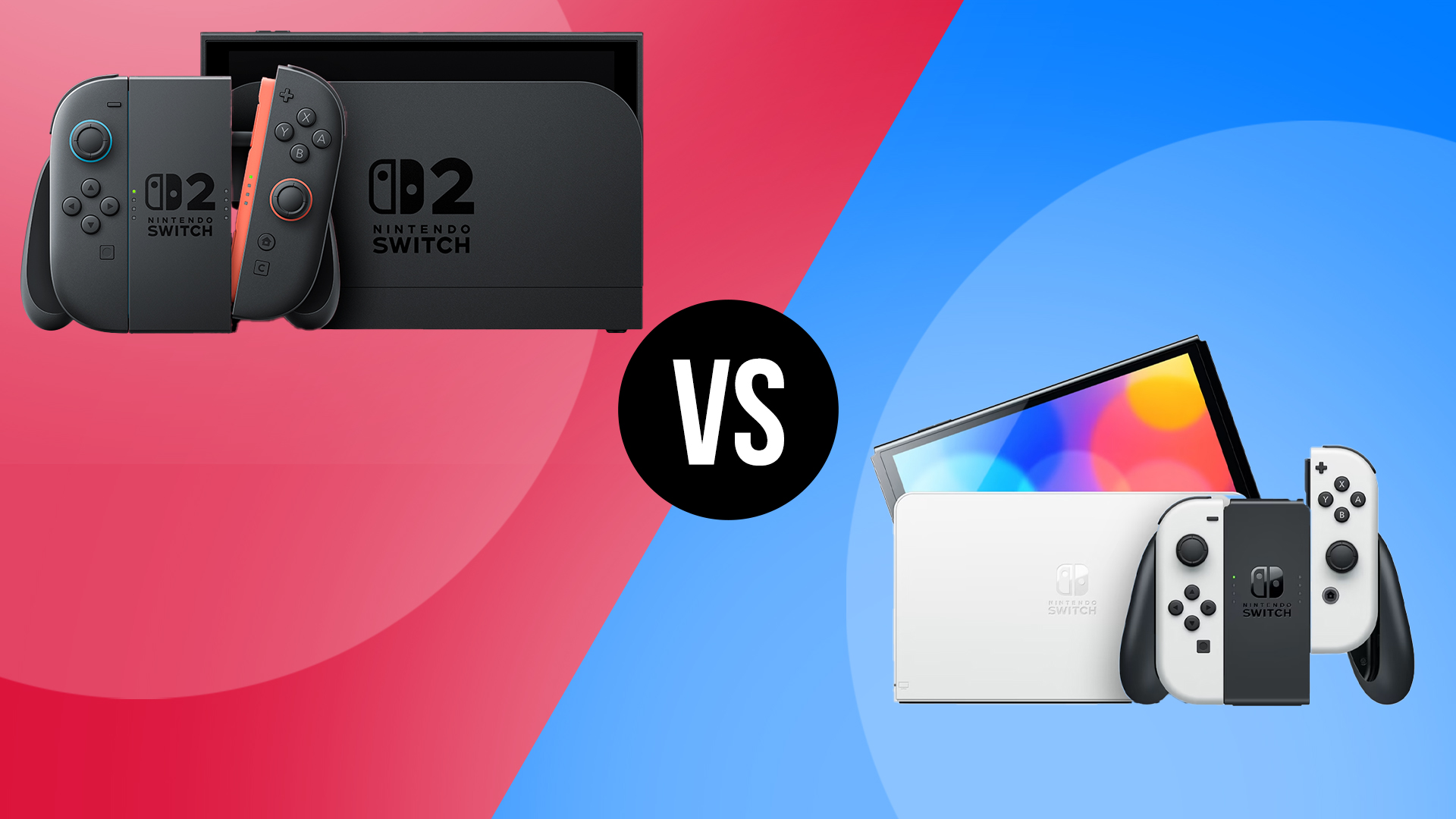
Design is arguably the one area where things are the most ‘business as usual’ with the Nintendo Switch 2. Aside from the much larger screen and slightly longer length of the handheld console itself, it keeps things relatively simple and straightforward by innovating upon what already worked with both the original Nintendo Switch and Nintendo Switch OLED.
Interestingly, there will be only one colourway available to purchase at launch, being a soft-touch matte black design that might seem a little boring initially, but is a lot more understated when compared to the garish bright red and bright blue Joy-Con that launched with the Nintendo Switch in 2017.
Read our Switch accessories guide for more, and they all work on Switch 2, but some new accessories like the Switch camera only work on the new handheld.
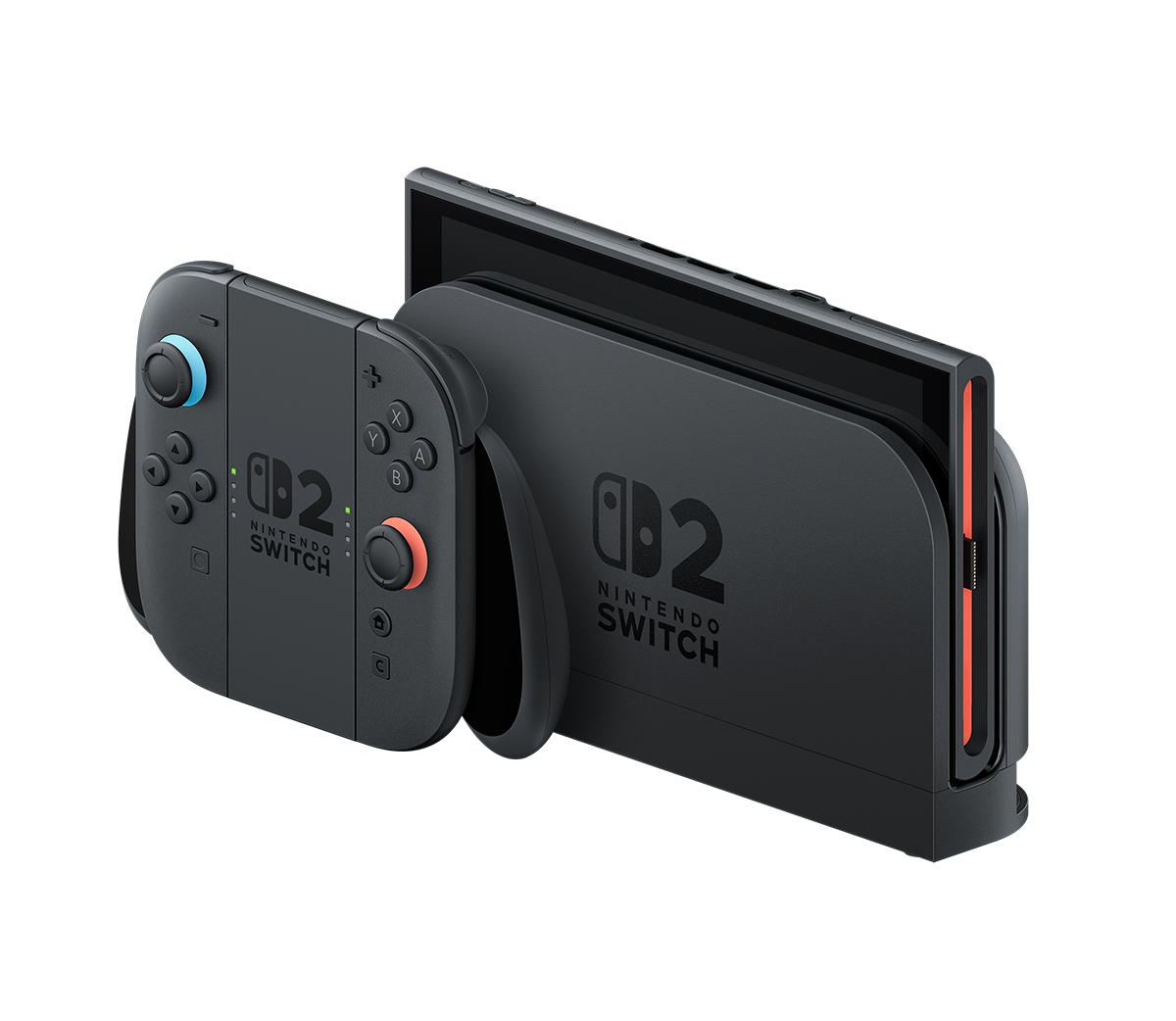
On the Switch 2 itself, the only real major change in terms of design is the return of the dreaded half-inch bezel border, which the existing Switch OLED model previously got rid of.
Playing your Nintendo Switch 2 on the big screen means placing it into the dock as before, only now this part of the console has seemingly received a serious upgrade. Whereas the dock for the original Nintendo Switch served as mostly a shell, with much of the processing still happening on the Switch device itself, in order to achieve that impressive 4K resolution, 120fps output the Nintendo Switch 2’s dock is a lot beefier.
Nintendo revealed this dock is largely down to the increased level of cooling required, which necessitates a dedicated fan system being built into the dock itself. This should make for improved ventilation when playing the Nintendo Switch 2 in docked mode.
Switch 2 vs Switch OLED: specs
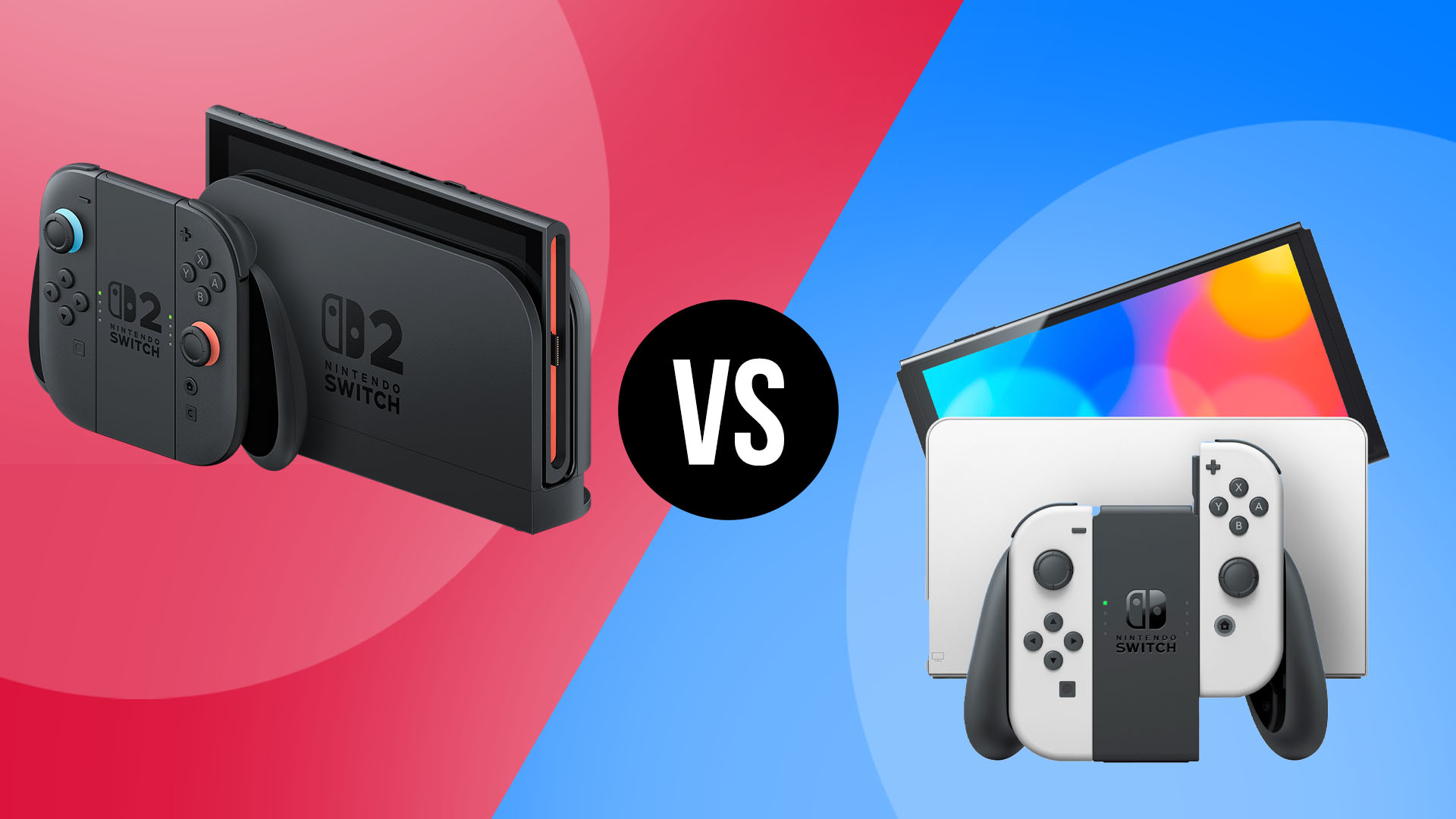
Switch 2 has a major spec boost over Switch OLED, particularly its processor, as Nintendo has partnered with Nvidia for a bespoke chipset that offers dedicated RT Cores and Tensor Cores for impressive visuals and the kind of AI enhanced improvements to framerates and textures PC gamers have come to expect.
It means the new Switch 2 can deliver ray-traced graphics as well as AI-enhanced features such as Deep Learning Super Sampling (DLSS) that boosts resolution for sharper details. It's something PC gamers have had access to for some time, and brings Switch to up to speed, meaning advanced games like Cyberpunk 2077 can now be played on Nintendo's handheld.
Likewise, the new console will offer 4K gaming when in TV mode with up to 120 frames per second (fps), which puts it in line with consoles like PlayStation 5 and Xbox Series X. It can even offer 120fps in handheld mode, but at the lower 1080p.
By contrast Switch OLED offers 720p in handheld and 1080p when docked, with 60fps. It's a clear generation behind Switch 2. Though its OLED display is excellent and the lower spec means the battery lasts longer; 4.5 – 9 hours compared to Switch 2's estimated 2 to 6.5 hours.
| Header Cell - Column 0 | Switch 2 | Switch OLED |
|---|---|---|
Processor | Custom Nvidia chipset (details TBC) | Nvidia Tegra X1 custom chipset |
Screen type | 7.9-inch LCD | 7-inch OLED |
Resolution (handheld) | 1,920 x 1080 | 1,280 x 720 |
Resolution (docked) | 3,840 x 2,160 | 1,920 x 1,080 |
HDR10 support? | Yes | Now |
Internal storage | 256GB | 64GB |
Expandable storage | microSD Express (up to 2TB) | microSD (up to 2TB) |
Sensors | Accelerometer / gyroscope, mouse / brightness (in console) | Accelerometer / gyroscope |
Ports (handheld) | 2x USB-C / 3.5mm | USB-C / 3.5mm |
Ports (on dock) | 2x USB-C / HDMI / ethernet | 2x USB 2.0 / USB-C (power adapter) / HDMI / ethernet |
Wireless connectivity | Wi-Fi 6 / Bluetooth / NFC | Wi-Fi 5 / Bluetooth 4.1 / NFC |
Built-in mic | Yes | No |
Speakers | Stereo | Stereo |
Battery capacity | 5,220mAh lithium-ion | 4,310mAh lithium-ion |
Battery life | 2 to 6.5 hours | 4.5 to 9 hours |
Weight | 399.16g (or 535.24g with Joy-Con 2 controllers attached) | 322g (or 422g with Joy-Con controllers attached) |
Dimensions | 4.5 x 10.7 x .55 inches | 4 x 9.4 x .55 inches |
Price | $449.99 / £395.99 | $349.99 / £309.99 |
Switch 2 vs Switch OLED: games
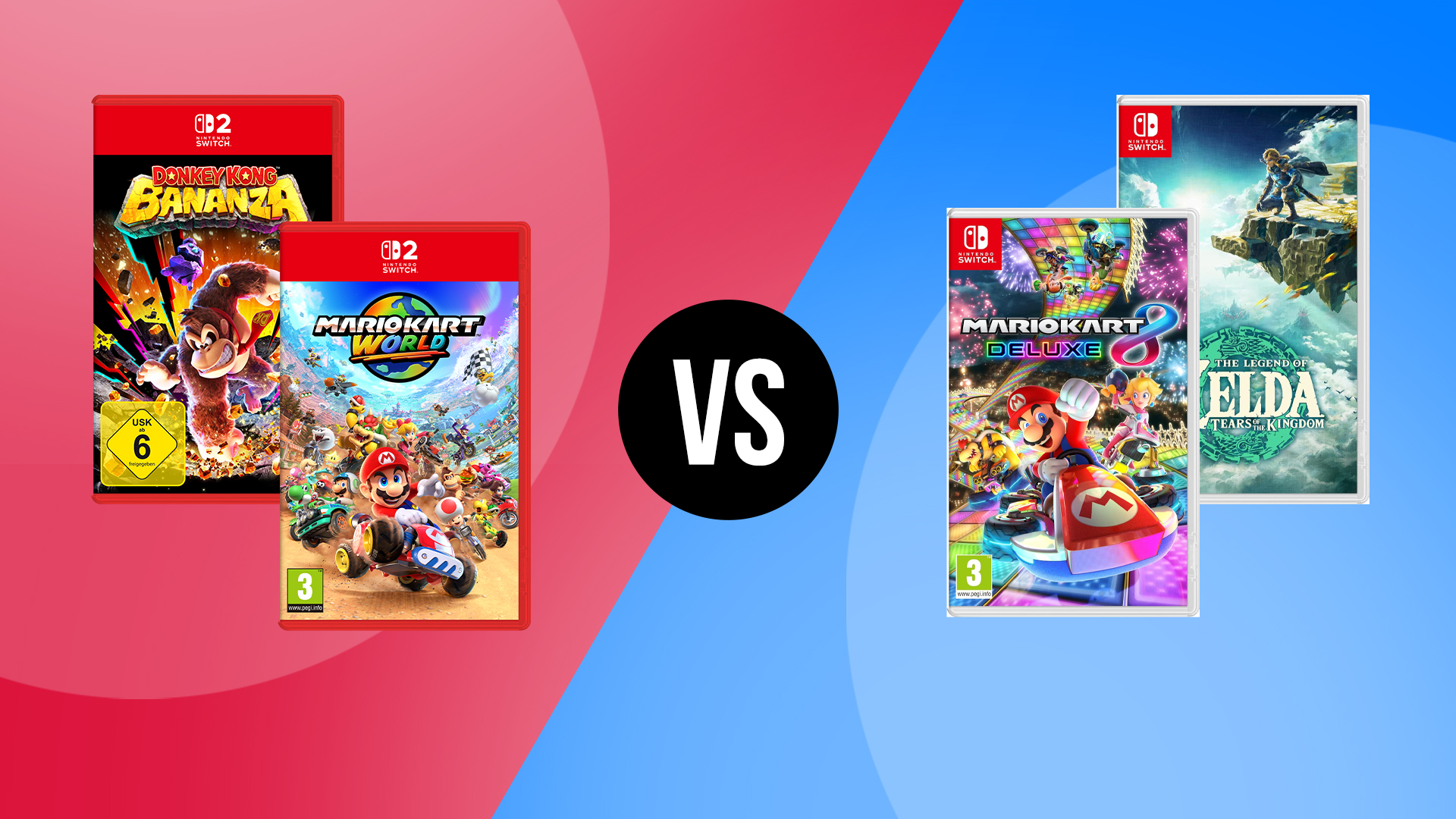
After previously announcing that ‘most’ original Nintendo Switch games would be compatible with Nintendo Switch 2, we now have a better idea of which games exactly will receive graphical, performance, and even content improvements.
Chief amongst this lineup, of course, are both The Legend of Zelda: Breath of the Wild and Tears of the Kingdom, which benefit from HDR support on the big screen but can now achieve a smooth 60fps at 1080p when played on Nintendo Switch 2 in handheld mode.
Other Nintendo Switch 2 games include Super Mario Party Jamboree, Metroid Prime 4: Beyond, and Kirby and the Forgotten Land (at least on the first-party side).
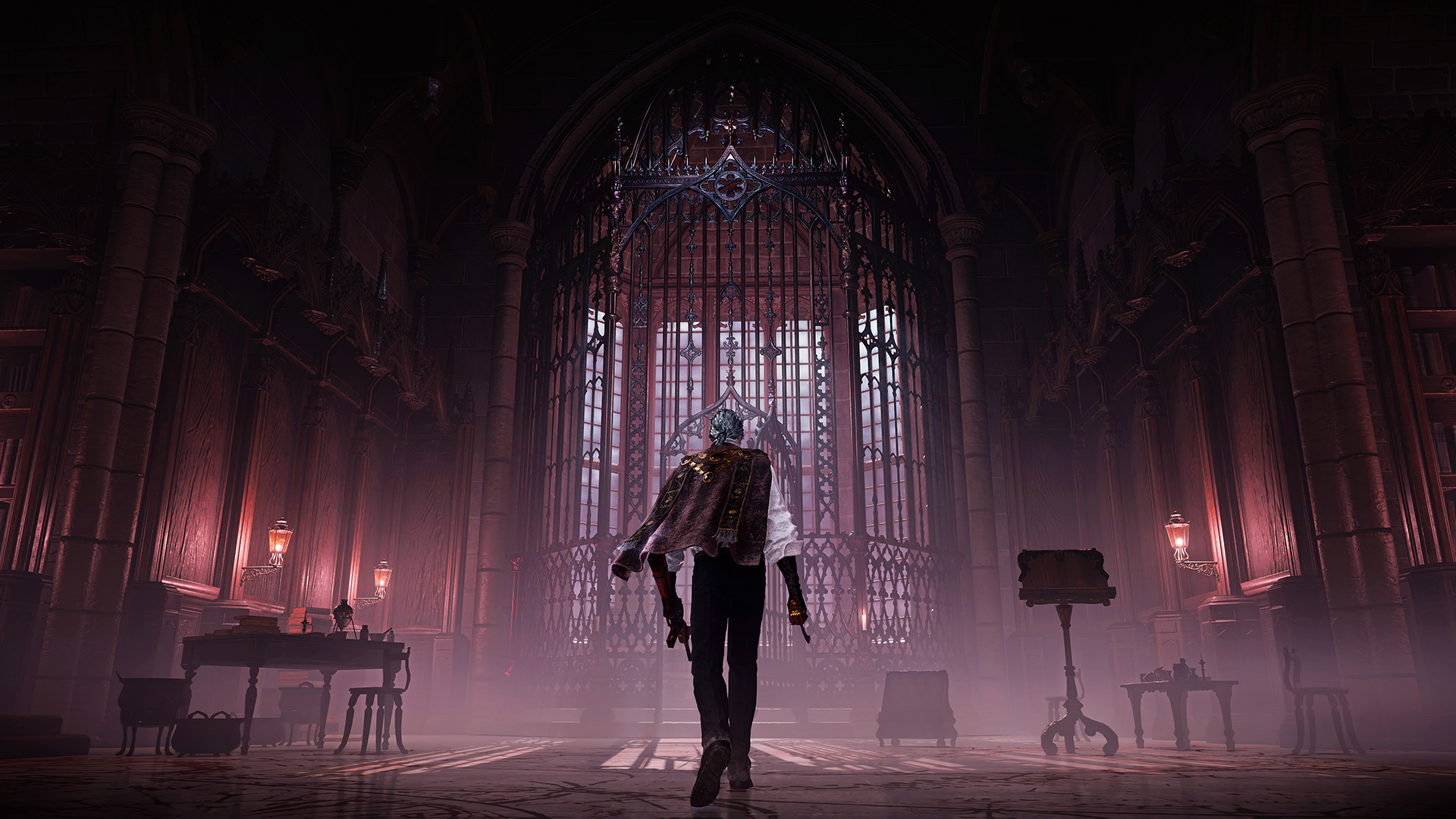
When it comes to totally new Nintendo Switch 2 games only playable on the new system, the day-and-date launch title is Mario Kart World, a more open reinvention of the beloved karting series that increases the racer count to 24 and offers a sandbox free ride mode for those who love to explore.
Then, releasing a month later is colourful 3D platformer Donkey Kong Bananza, which does a lot to make up for the lack of a 3D Mario at launch (it's being developed by the Mario Odyssey team). Other Nintendo Switch 2 exclusive games include Hyrule Warriors: Age of Imprisonment from developer Koei Tecmo and FromSoftware’s The Duskbloods, though neither have a hard release date.
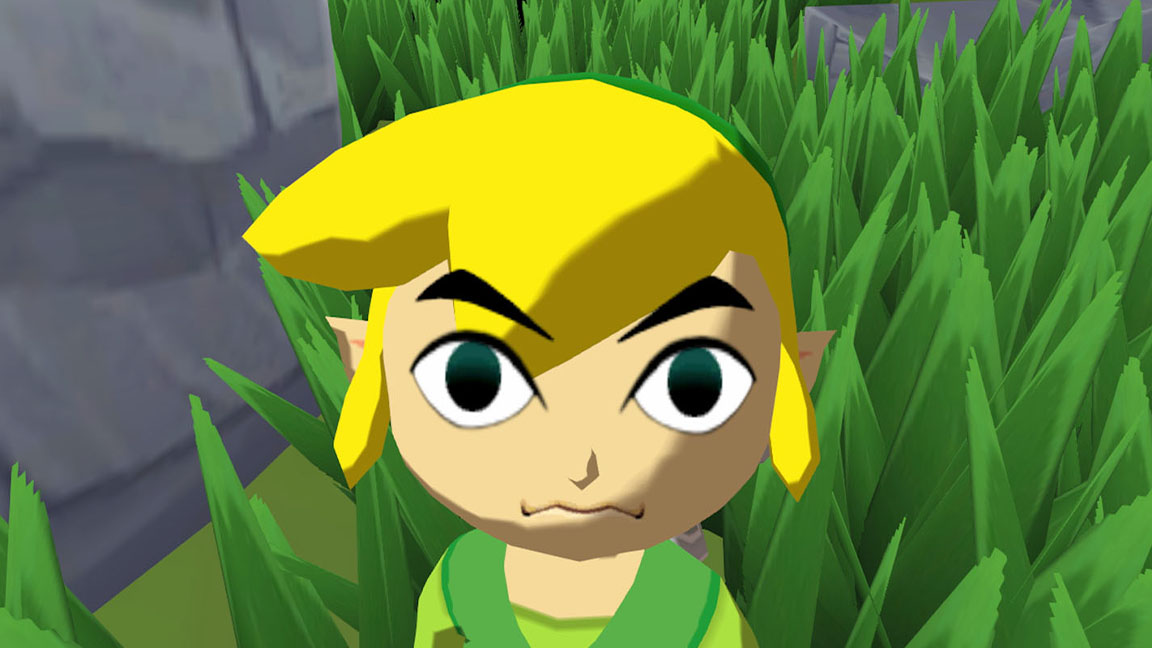
Nintendo has also recently revealed that the Nintendo GameCube library of games will be coming to its paid-for Nintendo Online + Expansion Pack service, exclusively on the new system. It’s expected to work similarly to previous classic games libraries – such as Game Boy, Sega Mega Drive, and Super Nintendo – available on the Nintendo Switch and Nintendo Switch OLED. Nintendo Online is why many consider Switch to be one of the best retro consoles, and Switch 2 looks like it will continue this trend.
Launch games available to play in the GameCube lineup include The Legend of Zelda: The Wind Waker, F-Zero GX, and Soul Calibur 2 – with more confirmed to come. All GameCube titles are only available on Nintendo Switch 2 and will receive further graphical enhancements and even a CRT filter.
Switch 2 vs Switch OLED: price and bundle deals
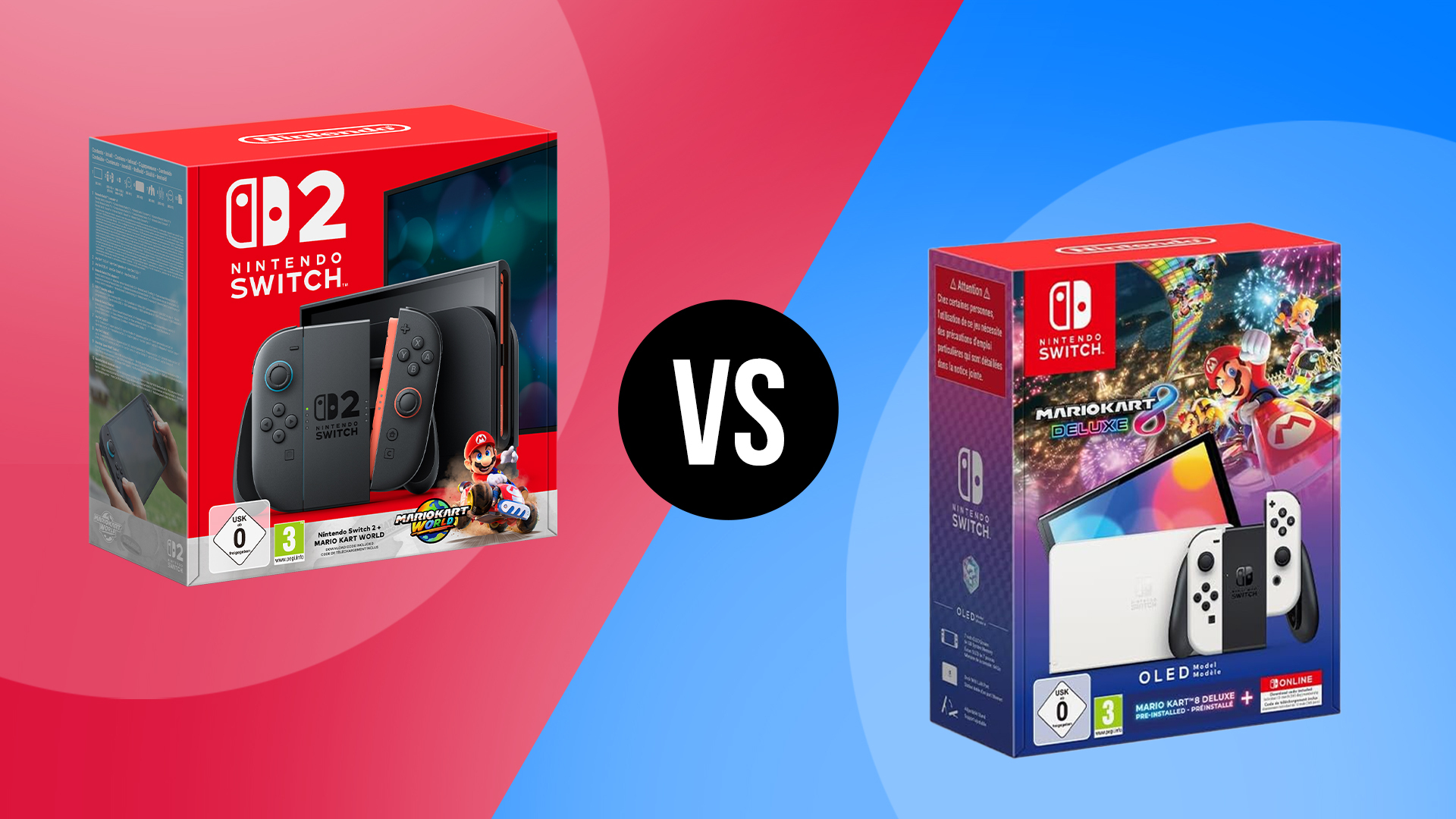
Compared to the original $299.99 / £279.99 standalone launch price of the very first Nintendo Switch, and the $349.99 / £310 it’s been revealed that the Nintendo Switch 2 will be available to purchase and pre-order in two separate bundles, both costing more.
The standalone Nintendo Switch 2 bundle, with just the console itself, retails for £395.99. By comparison, the Nintendo Switch 2 + Mario Kart World bundle is £429.99. Given that the physical version of Mario Kart World is $79.99 / £74.99, this one should absolutely be the Nintendo Switch 2 bundle people should go for if they plan on picking up Mario’s latest karting adventure.
In recent years deals on the older Switch have been good, but the Switch OLED has rarely dropped in price, but news of Switch 2 launching in June has seen some OLED deals emerging, and I'd wager more will come this year as Switch 2 takes off and people trade-up.
So, if you want a Switch OLED and can wait for a year or two to upgrade to Switch 2, this year would be a good time to buy. For example you can now buy a Switch OLED for £254 on Amazon, though US readers will be hard pushed to find one below $300. I'd expect some better discounts later in 2025, and considering some games like Metroid Prime 4: Beyond are dual-release, Switch OLED remains a good handheld.
Switch 2 vs Switch OLED: is it worth upgrading?
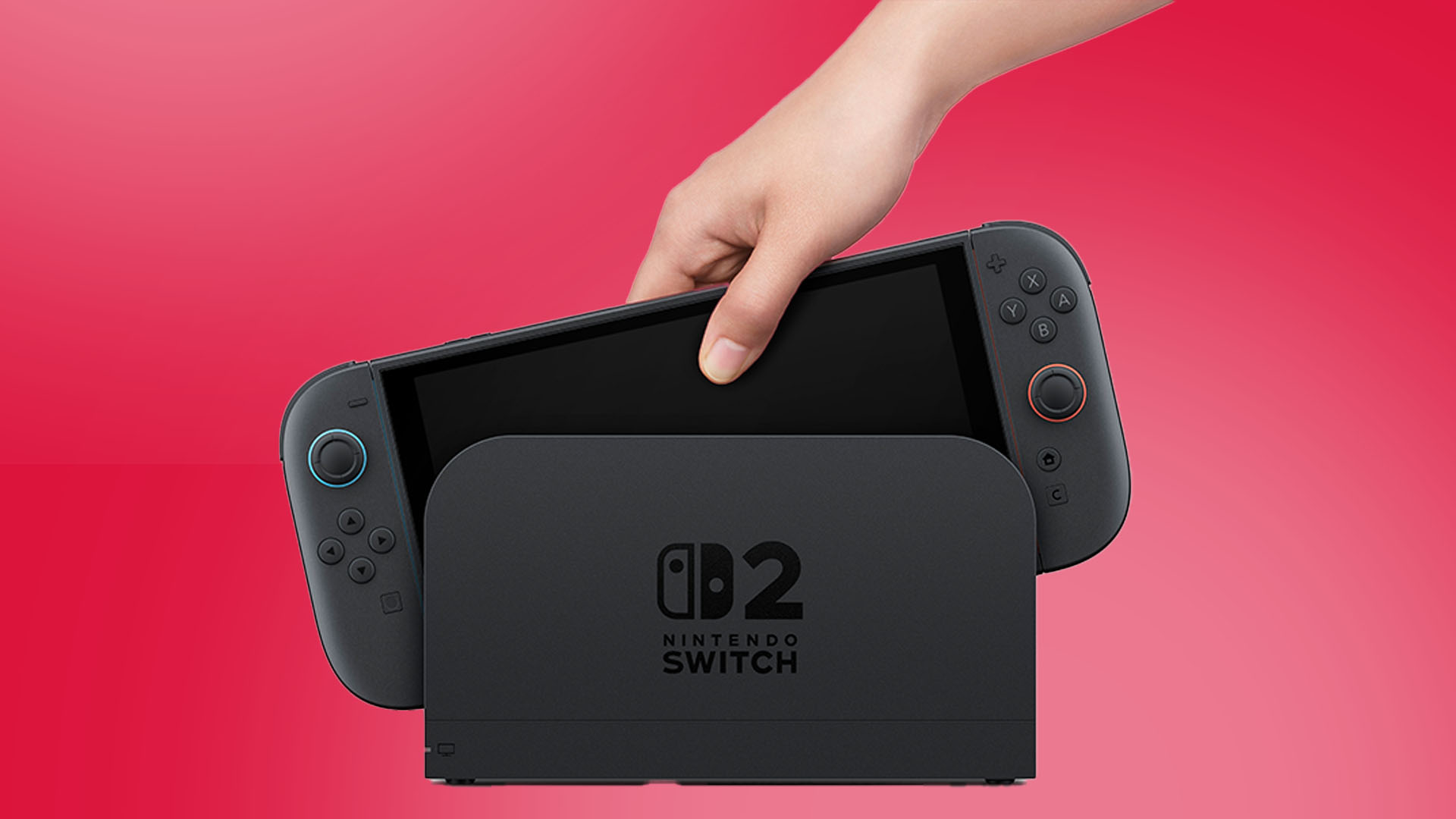
Whether or not the Nintendo Switch 2 is worth the £395.99 upgrade fee on day one is obviously subjective. However, given the nature of Nintendo hardware to hold its RRP for the indefinite future and the sheer number of improvements this sequel console brings by way of horsepower, controller functionality, and a subtle but stylish redesign, the Nintendo Switch 2 definitely falls into the category of being more of the same, but better.
For most people the arrival of a new Mario Kart will be enough to tip them over the edge, and even though the Nintendo Switch OLED edition has a better screen, it’s a minor issue given that the Nintendo Switch 2’s vivid LCD screen does a decent enough job. So far, from what we can tell, the Nintendo Switch 2 is on track to be another solid success story for the house of Mario.

Thank you for reading 5 articles this month* Join now for unlimited access
Enjoy your first month for just £1 / $1 / €1
*Read 5 free articles per month without a subscription

Join now for unlimited access
Try first month for just £1 / $1 / €1
Get the Creative Bloq Newsletter
Daily design news, reviews, how-tos and more, as picked by the editors.

Carlton is a video game journalist who grew up playing 16-bit consoles in the late 1990s, quickly developing a love for all things RPG and FPS. His favourite video game is Crash Bandicoot 3: Warped on the original PlayStation, which he’ll defend as having the very best 3D platforming in a game that doesn’t include the word “Mario”. In addition to Creative Bloq, you can find him writing words about games in places like Debug Magazine, WhyNow Gaming and more.
- Ian DeanEditor, Digital Arts & 3D
